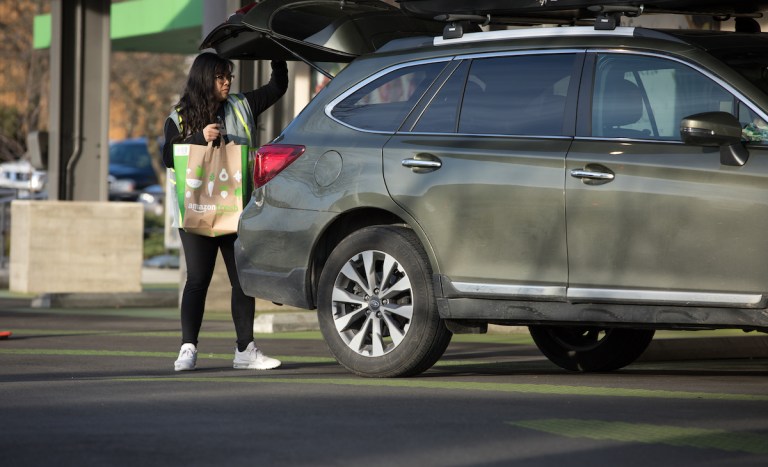Grocers Prioritize Pickup to Meet eCommerce Demand While Protecting Margins

As more consumers seek out the quick convenience of online grocery, merchants are turning to the pickup channel to meet this demand without bearing the high cost of delivery.
Take, for instance, Netherlands-based multinational grocer Ahold Delhaize, which shared on its second-quarter 2023 earnings call that the company’s United States business, which has been closing eCommerce delivery facilities, is turning its focus to the pickup channel.
“The U.S. teams have taken a close look at the entire omnichannel operations with a view to achieve fully allocated eCommerce profitability by 2025,” Ahold Delhaize CEO Frans Muller told analysts on the call. “… One such concrete action is to orient our online fulfillment capabilities towards more efficient, less asset-intense, same-day delivery models such as click-and-collect.”
Similarly, major retailer Target, which has a sizable grocery business, shared on its earnings call earlier this month that its curbside pickup business is driving digital growth, and the company is investing in encouraging the adoption of this channel.
“Results in our digital channel were led by continued growth in our drive-up service, … and we’ll continue to drive awareness of our industry-leading drive-up service and highlight the recent addition of new guest-focused options, including drive-up returns and the ability to have a Starbucks beverage delivered with your order,” Target Chairman and CEO Brian Cornell said on the call.
Even Instacart, which has built its audience on the strength of its on-demand delivery business, is noting the potential of the pickup channel, as the company shared in its Form S-1 filed Friday (Aug. 25) with the Securities and Exchange Commission (SEC) for a proposed initial public offering (IPO).
“We believe pickup generates incremental foot traffic and higher sales by providing customers with the ability to browse items, place orders wherever they are, and pick up their basket directly from local retailers,” the company stated.
The aggregator later added in the form that the channel is “expected to continue to be a meaningful component” of eGrocery, given that it “appeals to more value-oriented consumers focused on minimizing fees but who still want the convenience of online grocery.”
Pickup channels are more popular than delivery in the U.S. According to data from PYMNTS’ study “12 Months of the ConnectedEconomy™: 33,000 Consumers on Digital’s Role in Their Everyday Lives,” as of last November, 41% of consumers reported buying groceries online for curbside pickup in the previous month. This share is slightly larger than the 40% of consumers choosing to have groceries delivered to their homes at a later date. Plus, 37% of consumers opted for in-store pickup, while 34% chose a same-day, third-party delivery option such as Instacart.
Research from PYMNTS’ study “Tracking the Digital Payments Takeover: Catching the Coming eCommerce Wave,” created in collaboration with Amazon Web Services (AWS), found that 12% of grocery transactions occurred through digital channels (half via computer, half via mobile device). However, one in three shoppers said they are very or extremely likely to increase their online grocery purchases in the next 12 months.